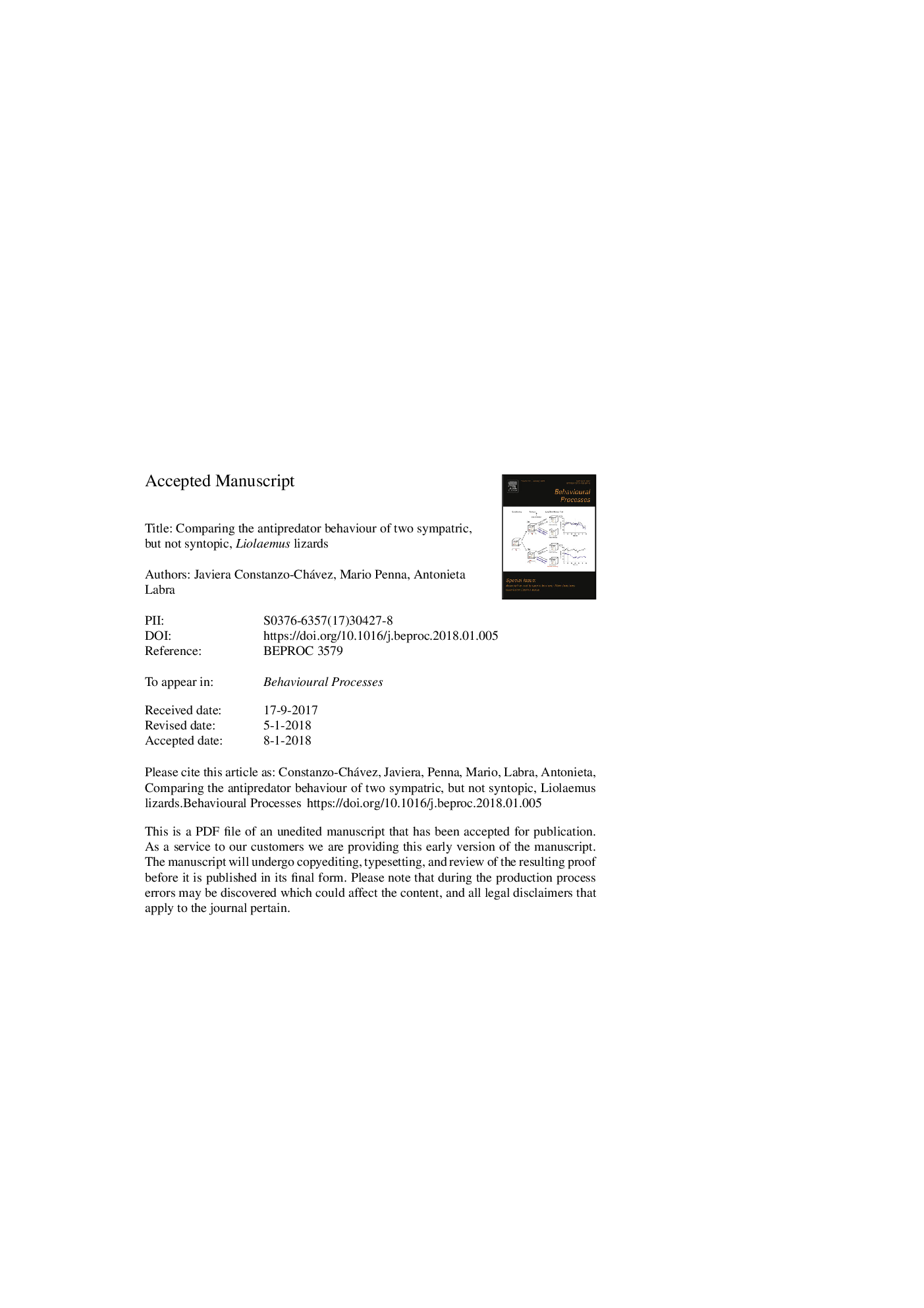| Article ID | Journal | Published Year | Pages | File Type |
|---|---|---|---|---|
| 8497008 | Behavioural Processes | 2018 | 30 Pages |
Abstract
The microhabitat preferences of prey animals can modulate how they perceive predation risk, and therefore, their antipredator behaviour. We tested under standardized conditions how microhabitat preferences of two Liolaemus lizards affected their responses when confronted with two types of ambush predators (raptor vs. snake), under two levels of predation risk (low vs. high). These lizard species are sympatric, but not syntopic; L. chiliensis basks on bushes, a complex microhabitat that may provide protection against visual predators, while L. nitidus prefers open microhabitats, basking on the top of large bare rocks, highly exposed to visual predators. If microhabitat complexity modulates the antipredator response, L. chiliensis may perceive lower predation risk, exhibiting lower intensity of antipredator responses than L. nitidus. Both species reduced their activity after being exposed to both predators, but lizards differed in the assessment of predation risk; L. nitidus reduced its activity independently of the predation risk experienced, while L. chiliensis only reduced its activity in the high-risk condition. The microhabitat preferences shaped during the evolution of these species seem to modulate their perception of predation risk, which may cause interspecific differences in the associated costs of their antipredator responses.
Keywords
Related Topics
Life Sciences
Agricultural and Biological Sciences
Animal Science and Zoology
Authors
Javiera Constanzo-Chávez, Mario Penna, Antonieta Labra,
